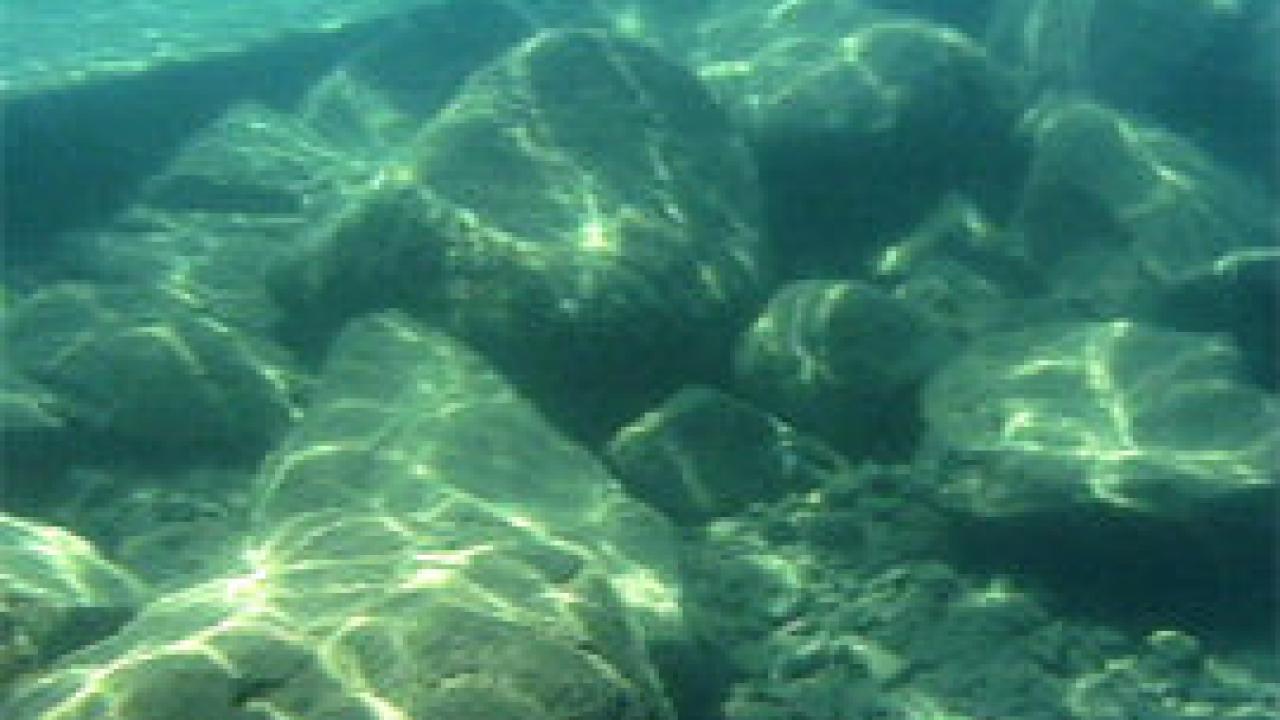After several years of relative improvement, Lake Tahoe's clarity declined in 2003, researchers at the UC Davis Tahoe Research Group announced at the Tahoe Research Symposium today. The decline was within the range of recent year-to-year changes.
Relatively high thunderstorm precipitation in 2003, leading to increased runoff of soil particles and pollutants into the lake, was likely the most important factor in the 2003 results.
"I view this as neither good nor bad news, but it reaffirms the critical need for processes such as the Environmental Impact Program, the Tahoe Maximum Daily Load and the Regional Plan Update," said John Reuter, a researcher with the UC Davis Tahoe Research Group. The group is working to see which measures to protect and restore the lake are most effective, he said.
Measurements taken throughout the year show an average clarity of 71 feet (21.6 meters) compared to 78 feet (23.8 meters) in 2002. UC Davis researchers measure the lake's clarity every seven to 10 days by lowering a white disk called a Secchi disk into the water until it disappears from sight. When recordings began in 1968, the disk could be seen at depths of 102 feet (31 meters).
The annual average Secchi measurements for the preceding five years were:
- 2001: 73.6 feet (22.4 meters)
- 2000: 67.3 feet (20.5 meters)
- 1999: 69 feet (21 meters)
- 1998: 66 feet (20.1 meters)
- 1997: 64 feet (19.5 meters)
"The results for 2003 demonstrate the continued need for environmental improvements at Lake Tahoe," said John Singlaub, executive director for the Tahoe Regional Planning Agency. "It's important to look at these numbers in the context of the big picture of what's happening and our path for the future," he said.
The 2003 lake clarity measurements likely do not indicate a significant change in the long-term water quality of Lake Tahoe, according to Larry Benoit, TRPA's Water Quality Program manager.
"While the pattern may not be what we want to see or would have predicted, the decrease in Secchi depth is well within the average inter-annual variation in these measurements. We need to sustain and increase our efforts through the Environmental Improvement Program to reduce the loading of fine sediment, nitrogen and phosphorus to Lake Tahoe," he said.
Tahoe's clarity varies from year to year, making it difficult to use data from any single year or a small number of years to draw conclusions about whether the lake is improving overall or getting murkier. To solve that problem, UC Davis researchers Alan Jassby, Reuter and Goldman developed a model that draws on more than 30 years of measurements to predict what the change in clarity should be under various conditions.
The model shows that the most important factor affecting year to year changes in clarity is annual precipitation, including rain, snowfall and runoff. Increasing transparency in recent years was mostly due to relatively dry years from 1999 to 2002, Reuter said.
The annual average clarity data are used by TRPA and other agencies in their efforts to restore the health of the Tahoe ecosystem. The Environmental Improvement Program includes a large number of projects to maintain healthy natural resources. The Tahoe Total Maximum Daily Load (TMDL) is a water pollution reduction program being developed by UC Davis scientists and research partners. The work should help researchers and the TRPA identify which management measures will have the biggest impact on the lake, Benoit said.
The symposium, "Research as a Tool in Tahoe Basin Issues, 2nd Biennial Conference on Tahoe Environmental Concerns" began Monday and runs through Wednesday, May 19, at the Cal-Neva Resort in Crystal Bay, Nev.
Media Resources
Andy Fell, Research news (emphasis: biological and physical sciences, and engineering), 530-752-4533, ahfell@ucdavis.edu
John Reuter, Tahoe Research Group, (530) 304-1473, jereuter@ucdavis.edu
Charles Goldman, Tahoe Regional Planning Agency, (530) 752-1557, crgoldman@ucdavis.edu
Julie Regan, (775) 588-4547, jregan@trpa.org
